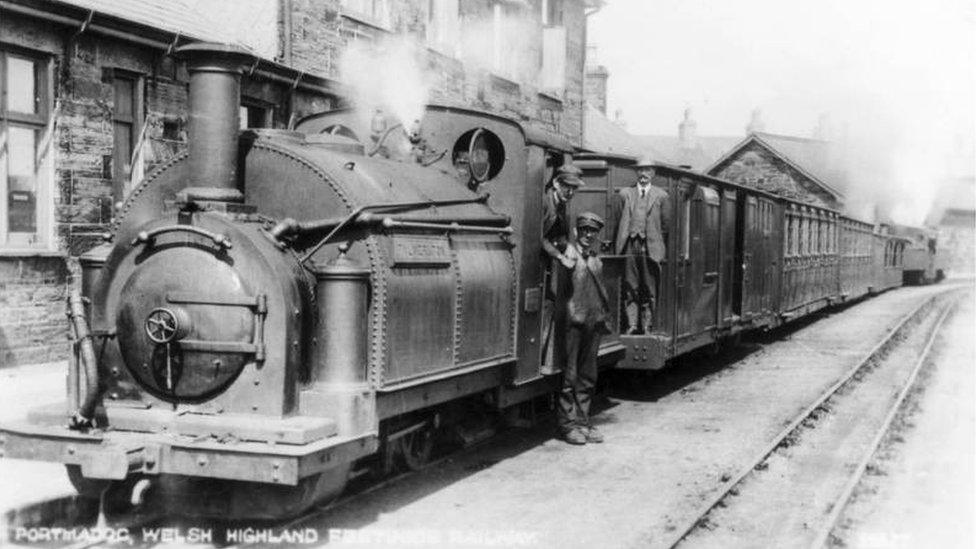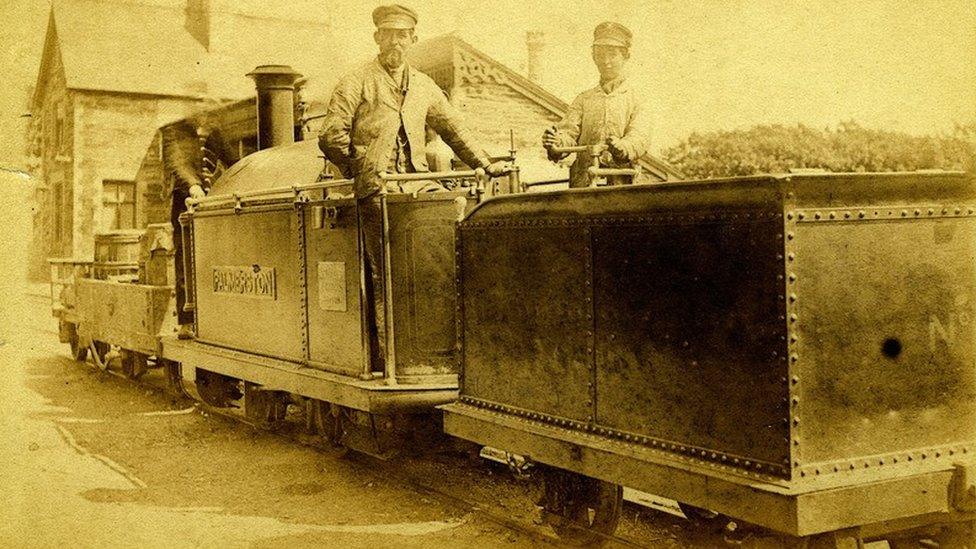Ffestiniog Railway's locomotive Palmerston on display
- Published

How far is six million miles?
A sixth of the way to Mars, to the Moon and back three times, around 250 circuits of the equator, or, to put it another way… an awfully long way.
That is roughly how far narrow gauge steam locomotive Palmerston has travelled during her 153 years on the Ffestiniog Railway.
But now she is getting a well-earned week's rest, as she returns to London for the first time since she was built, to go on display in the ticket office of King's Cross Station.
The visit is to mark the launch of Big Train Meets Little Train, a UK government-funded free guide to Welsh narrow gauge railways and how to visit them by rail.

Chris Parry of the Ffestiniog Railway explained: "Palmerston was built at George England's Hatcham Iron Works in East London and was completed in March 1864.
"She was named after Viscount Palmerston, Liberal prime minister and chairman of the Welsh Slate, Copper & Lead Mining Company's quarry at Blaenau Ffestiniog.
"The George England engines are the oldest surviving narrow gauge locomotives in the world. Remarkably, after more than 150 years, four of the six built still survive, two of them in regular use and a third being restored for a return to service later this year."
Palmerston saw extensive use on both the Ffestiniog and Welsh Highland Railways until withdrawal from service in 1937.
Despite being deemed "beyond repair", she was the subject of a long restoration and eventually re-entered service on the railway in 1993.

Her sister engines were Prince and Princess - named to mark the marriage of the Prince of Wales, the future Edward VII, to Princess Alexandra of Denmark - and Mountaineer, reflecting the rugged terrain over which the railway operates.
The world's oldest large-scale narrow gauge system, The Ffestiniog and its sister railway the Welsh Highland form the longest heritage line in the UK - stretching 40 miles coast to coast from Caernarfon to Porthmadog and Blaenau Ffestiniog - and carrying nearly 400,000 passengers each year.
The little engines rack up about 63,500 miles annually, meaning that - allowing for her 56-year-enforced layoff - Palmerston has somewhere in the region of six million miles on the clock.
While they may look quaint nowadays, when they went into service in 1864 they were the cutting edge of technology.
The Ffestiniog was the first railway in the world to adopt and make regular use of steam locomotives on a very narrow gauge, on a public railway and over a significant distance.

They demonstrated that steam technology that had evolved on the main lines from 1829 onwards could be applied to railways built on a much smaller scale and at much lower cost.
Attracting engineers from around the globe, The Ffestiniog proved the blueprint for narrow gauge railways the world over, including France, India, the USA, Hungary, South Africa, Namibia, Venezuela, New Guinea and Morocco, as well as the railways built to serve the trenches of the First World War.
Throughout her visit until 25 February, staff and volunteers from The Ffestiniog will be on hand at King's Cross to answer enthusiasts' questions.